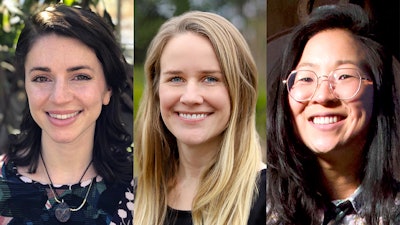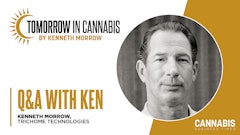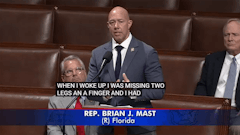
How do cultivation and post-harvest practices and flower properties affect cannabis’s smokability and favorable attributes, such as the smoothness, and product consistency? What contributes to the differences in lightability, ash color (black ash versus white ash), and how easily the ash falls off a preroll?
Discovering the answers to these questions is the crux of a new partnership between the Cannabis Research Coalition (CRC) and The Network of Applied Pharmacognosy (NAP) and a multiphase research project. An added benefit will see the research bridge the gap between cultivators and medical practitioners.
Allison Justice, Ph.D., founder and CEO of the CRC and South Carolina-based hemp company The Hemp Mine, referred to the concept as "The Science of Smokability.”
“We want to evaluate smoke quality as characterized by physical metrics such as ash characteristics, carbohydrate changes and smoke composition combined with community feedback on aspects like taste, heaviness, and overall effects will provide subjective data that complements the physical metrics,” Justice told CBT. “Why? This feedback can be correlated with specific cultivation and post-harvest practices to identify which methods are most favorable for desirable smoke qualities."
The CRC and NAP focus on two distinct areas of cannabis, which, when brought together, link the “plant side” with the “human connection side,” said Justice. Together, they aim to forge a path between the grow, the lab and the cannabis patient and/or consumer, and vice versa.
"The partnership between the CRC and NAP is strategically connecting the cannabis industry, academia, and consumers to provide the most applicable knowledge for cannabis science,” explained Riley Kirk, Ph.D., a pharmaceutical research scientist with a specialty in natural products chemistry, who co-founded NAP with fellow pharmaceutical research scientist, Miyabe Shields, Ph.D., whose background is in drug discovery biochemistry. “Our research on cannabis cultivation and the consumer experience will push our industry toward higher-quality medicine for cannabis consumers and create sustainable and predictable metrics for cultivators.”
Justice cut to the chase: “Miyabe is very focused on, ‘How does it affect the body?’ Riley is more of the chemistry of the plant and then how it affects the body. And then I'm back growing the plants.”
Shields stressed the importance of accessibility and providing research results that have actual applications for growers, cannabis businesses and consumers. "Our collaboration will address key research topics that cover every aspect of cannabis from seed to sale to consumer experience. We prioritize relevant, tangible information that will have a direct impact on the cannabis community and industry,” she said. “We value transparency, and we approach our research with a more inclusive, open mindset than traditional academic research or industrial research alone. Together we aim to create a paradigm shift in integrating real-world results and communicating the science so all can understand and participate."
RELATED: [VIDEO] "Master the Art of Drying and Curing With Dr. Allison Justice"
Justice talked with CBT about the new partnership and additional details on the groups’ immediate and longer-term research plans. In short, CRC and NAP anticipate applicable results that will benefit the industry as it collectively learns more about the impacts of cannabis inputs and practices on end products and consumer preferences. Increasingly, the industry is developing a consumer packaged good (CPG) approach to the plant, where product quality and consistency is paramount. Here is what Justice had to say about that.
Noelle Skodzinski: How did the partnership come about?
Dr. Allison Justice: Myself, Miyabe and Riley connected really just through LinkedIn—being female Ph.D.s within the cannabis space—and started out just having just a unique online friendship that turned into meeting at conferences and things of that sort. And we all very much respected what each other did except we were all very, very different scopes of the plant.
So we've been trying to come up with a way to work together for quite a while, and I was telling them about some stuff I was going to do, kind of building off the white ash versus black ash sort of deal and that I really wanted to dig a little deeper with the smokability because a lot of that is dependent on either practices within post-harvest or even practices within cultivation.
My skillset is forming those projects and understanding and learning from the grow basically to post harvest.
But as we all know, when you're talking about smoking, if somebody is smoking, they're not necessarily thinking about what's happening prior to it going in their hands. They're wanting to know what's happening once it goes into their body and everything from as simple as, yes, it has a lot of medical benefits, but simply the smoothness, you know, those little, little pieces of that dried, cured flower that make huge impacts.
And so I dug deep, deep, deep into tobacco journals because even though it's a much different process, there are things that are done or not done in tobacco to have a smoother smoke. Because if you have one cigarette and then you buy a box in another state of that same brand, they're going to be exactly alike. And that's because they put a ton of time and effort into understanding what people want and how to achieve that every time.
So me and my plant science side, and them with the human connection side is where we found we united very well. I grow the plants, put them through post-harvest, and even through to packaging, and then hand them off to Miyabe and Riley without them knowing what certain treatments are. They can then blind that, making it a double-blinded test, and send it out to people in the public … [to get] some true data from all the treatments that can manipulate the plant one way or the other in the processes beforehand.
That's kind of the grand scope of things of them collecting the data from the human portion and me handling what's prior to that.
Skodzinski: Do you have a starting point in mind, and any time frame for the research?
Justice: Honestly, it will probably end up being a multiyear study, but Phase I will simply be looking at water content because if it's really wet or really dry, that's going to produce very different effects from the smoothness to the ash color to even how easily the ash falls off the preroll, and lightability. Things like that are what we'll be looking at.
And I think from a standpoint of kicking it off and to get going, it will be something that everybody understands pretty well—is the flower really wet or really dry in your preroll or flower and how just that one factor can change a lot on the consumer side.
Phase two is going to be looking at certain nutrient content.
In the tobacco industry, from the tobacco companies, the farmers are told, “Do not increase certain elements—magnesium, nitrogen to a certain extent, and potassium. And obviously the plant needs those, but I'm talking super excess. Once there's really high excess, if it's nitrogen for example, a carcinogen can actually be created. If you have a really, really high nitrogen content and then it's burned.
And then just certain ones like magnesium and potassium, if they're super elevated—and I'm talking almost toxic to the plant—that can rapidly change how the ash performs.
So, color, and again … how the ash hangs on to the end of the preroll, it can affect that.
Phase II would be pumping plants way higher than we would ever apply, but just to understand where that stop and end is of having toxic amounts of elements in the preroll.
And what's really cool to think about is maybe that does go back to, OK, well why are we flushing or not, and how does that support the consumer’s experience?
I'm really excited about it, and I think the industry will be, and that's probably something I didn't even mention is looking at Phase I with being just moisture content—if it's more moist or not—is that changing the ash color?
RELATED: "White Ash Vs. Black Ash"
It's taking a lot of plant science and different protocols that can be shaped around growing and post-harvest treatment. And then Miyabe and Riley taking it and saying, “Here's a double-blind, statistically relevant test showing, is it smooth, is it smoking how I want?
Really getting down to all those things. People know what they want, but we don't necessarily know how to get there, at least from a very strict scientific standpoint.
Skodzinski: So, this is what you envision as the first phase, and the second, as you mentioned will be nutrients and to some extent flushing. What’s after that?
Justice: Another one will be looking at carbohydrates and the smokability by carbohydrate change. For example’s sake, in tobacco, they will actually add sugar to cigarettes to make it smoke better. So again, going back to flushing, if you're cutting off the nutrients, and [the plants are] starting to ripen faster, more or less, then you're turning the starches into sugars.
So maybe you are actually making your smoke “sweeter,” which in the tobacco industry, that's known to be something the consumer wants.
That's just three that immediately we need to start working on. We had to start somewhere. But there's plenty more. So I think it could be quite a nice series of different treatments like this.
Skodzinski: Are there time periods for each phase that you have set?
Justice: I can answer from my side of the project, but I would say we could knock out this first study within Q1 or before Q2 this year, and then probably the second study the second-half of the year. Just rough, rough estimates.
Skodzinski: What about funding? Do you have funding, and if so, where do you get it?
Justice: At least thus far it's self-funded.
I don't know why I'm drawn to it so much, but I want to understand it and be able to put some data points around quality. And, in reality, because I already have a company that produces prerolls, it's not a big cost.
That's not to say it's not nice to [have support for it], but I guess my point is we're going to do it with or without sponsoring, but we are searching for strategic partners and collaborators to expand this project in the future—if we're talking prerolls and that's obviously super important for them. Even pitching in a little or giving supplies or something to that effect, every little bit helps.


























